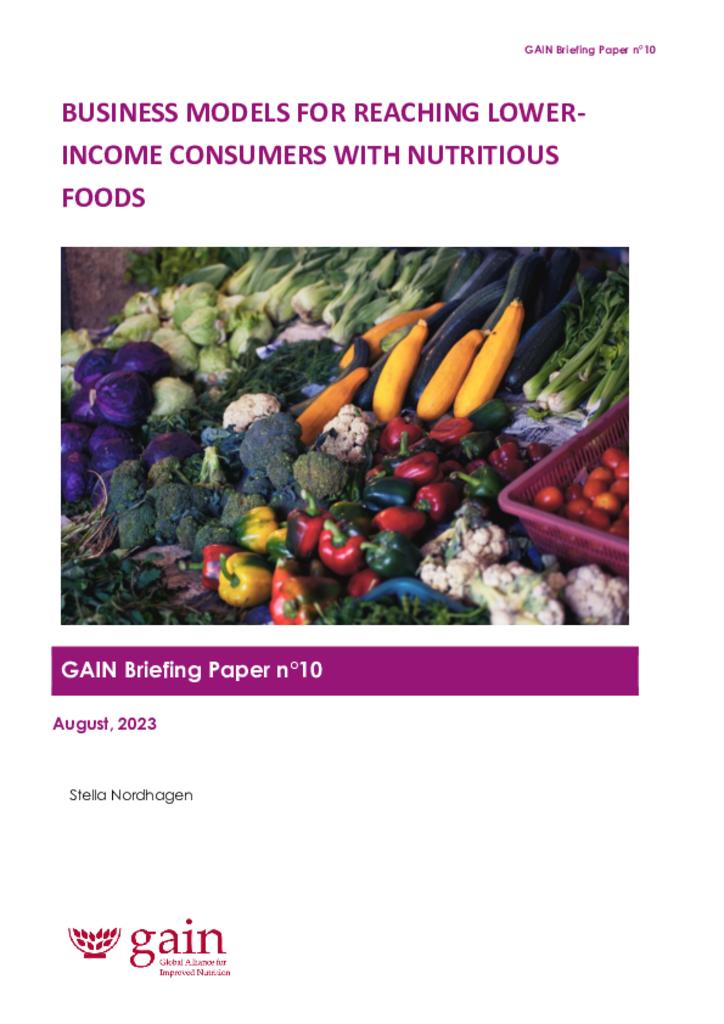Lower-income populations in low- and middle-income countries (LMICs) often face challenges accessing affordable, desirable, safe, and nutritious food, contributing to poor diet quality and malnutrition. As the main source of food for most of this population, private-sector firms have the potential to play a role in alleviating this – but to be sustainable, they must do so profitably. This briefing paper summarises specific ways that companies have adapted their business model to reach lower-income consumers in LMICs with food products. The analysis is based on a systematic review of research as well as a scoping review of real-world companies.
Thirteen specific business model features that firms have used to reach lower-income consumers with food products are presented: Cross-subsidisation, increasing value through convenience, use of waste products, less desired parts, quality segmentation, cheaper ingredients, small sizes, selling in flexible quantities, no or reusable packaging, distribution hubs, bespoke last-mile distribution networks, providing new support to existing retail/distribution networks, and direct sales in underprivileged areas. While this diversity is promising, there is little high-quality evidence on the ability of the business model features discussed here to actually reach lower-income consumers, improve those consumers’ diets, and do so profitably.
None of these features alone can ensure success: each feature needs to be supported by the other aspects of a solid business model, such as strong customer relationships and a robust supply chain, and companies often adopt multiple different features at once. But when used well, and for nutritious foods, such approaches have the potential to help improve lower-income consumers’ nutrition.
